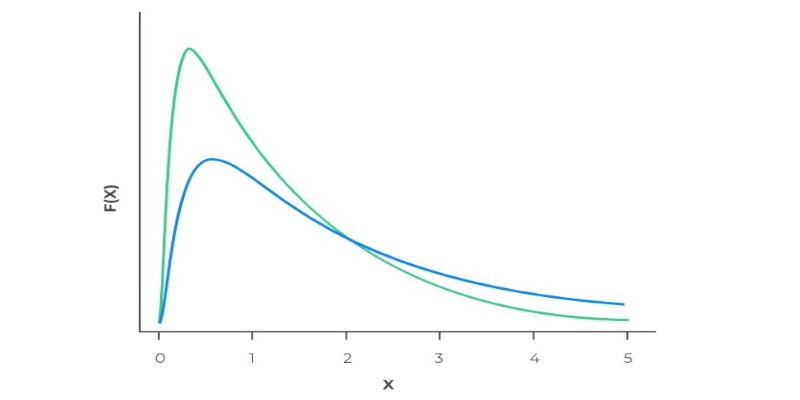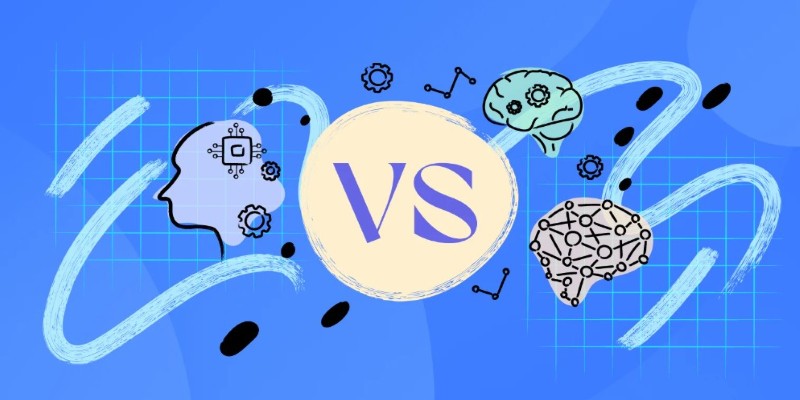Advertisement
When people hear "data science," their minds often jump straight to coding, machine learning, or maybe big tech companies. But behind every successful data project lies a quiet yet strong foundation: mathematics. Without it, most data models would be nothing more than lucky guesses. Math isn't just a support system in data science — it’s the core that shapes how we think, analyze, and predict. Let’s walk through it in a way that feels less like a heavy textbook and more like a natural part of the data science world.
If you want to predict customer behavior, identify patterns, or even build a recommendation engine, math is your behind-the-scenes partner. Think about it: when you calculate an average, you’re using statistics. When you try to predict future sales, you're applying probability and linear algebra. Each part of your data science workflow touches math in some form.
One big reason why math matters is that it helps you make informed choices. Instead of just guessing which model might fit your data, you'll have a clear sense of why something works — and why it doesn't. For example, you might choose a logistic regression model over a decision tree, not because someone said so, but because you understand how math shapes their behavior differently.
Another part where math sneaks in is in understanding bias and variance. Without a grasp of these two concepts, it’s easy to build models that either overfit (memorize the data) or underfit (miss the patterns). A little math makes these ideas click in a way that no amount of coding tutorials can.
Nobody expects you to master every field of mathematics. However, some areas pop up again and again in data science projects. Here's a closer look at the ones that truly matter:
If there’s a heartbeat of data science, it’s statistics. Every time you summarize data, test a hypothesis, or estimate future events, you are working with statistical ideas. You’re not just crunching numbers; you’re trying to understand what the numbers are telling you.

Probability plays a huge role, too. It answers questions like: What's the chance a customer will churn? How confident can you be that a product will sell well next month? Understanding probabilities gives you a way to manage uncertainty instead of being overwhelmed by it.
Linear algebra often sounds scary because of its abstract feel, but it shows up everywhere in data science. Think about recommendation systems (like how Netflix suggests shows) or facial recognition software. They all lean heavily on vectors, matrices, and transformations.
In short, if you’re working with lots of data points at once — which you usually are — linear algebra is your best friend. It helps you manage, move around, and transform that data to see the hidden patterns inside.
You don’t need to do heavy calculus every day, but understanding the basics will help you immensely, especially when diving into machine learning models. Optimization is the keyword here. Calculus helps you find the best possible values for your model’s parameters by minimizing errors.
Think about how algorithms like gradient descent work. They’re all about moving a little at a time in the right direction to find the lowest point (minimum error). That's calculus doing its quiet work.
Sometimes, you'll work with things that are not continuous — think clicks on a website, social networks, or paths in a graph. Discrete math handles these situations. Graph theory, in particular, is used when dealing with networks, such as how Facebook figures out friend recommendations.
Another important part is combinatorics, which is the math of counting and arranging things. It becomes useful when you're calculating possible outcomes or scenarios.
The idea isn’t to become a mathematician overnight. It’s about building an intuition for these concepts. You want to get to a point where, when you see a problem, you naturally think about it in mathematical terms.

One way to do that is by applying math while working on real data projects. Reading theory is fine, but seeing how probability affects a prediction model or how linear algebra powers dimensionality reduction will make it stick way faster.
There’s also a trick many overlook: focusing on "why" instead of just "how." Instead of memorizing a formula, ask yourself why it works. Why does linear regression minimize squared errors? Why does gradient descent move against the slope? That kind of thinking helps math become a second language to you — one you don’t even notice you're using after a while.
Some people jump into data science with a "code-first, math-later" approach. That works for a little while — until they hit a wall. Maybe their model behaves strangely, or their predictions are off. Without understanding the math, it's like trying to fix a car engine just by guessing where to poke.
Ignoring math can also lead to misinterpreting results. You might think your model is accurate because it scores well on your training data, but math would reveal that it’s just memorizing instead of generalizing.
Another pitfall is overtrusting software. Just because a tool spits out a number doesn't mean it’s the right number. Math helps you question results, tweak models properly, and genuinely understand what’s happening under the hood.
Mathematics might sound like the "boring part" of data science at first glance. But once you start to get comfortable with it, you’ll realize it’s what makes the whole field exciting and creative. It’s not about memorizing formulas; it’s about building a deeper sense of how things connect.
When you see math as a tool that supports your curiosity, data science becomes less about trial and error and more about making smart, thoughtful moves. A strong math foundation doesn’t just help you build better models; it helps you become a better thinker.
Advertisement

Ever wonder why real-world data often has long tails? Learn how the log-normal distribution helps explain growth, income differences, stock prices, and more

From training smarter AI to protecting privacy, synthetic data is fueling breakthroughs across industries. Find out what it is, why it matters, and where it's making the biggest impact right now

Ever wonder how data models spot patterns? Learn how similarity and dissimilarity measures help compare objects, group data, and drive smarter decisions

Confused about machine learning and neural networks? Learn the real difference in simple words — and discover when to use each one for your projects

Wondering how numbers can explain real-world trends? See how regression analysis connects variables, predicts outcomes, and makes sense of complex data

Want to learn how machine learning models are built, deployed, and maintained the right way? These 8 free Google courses on MLOps go beyond theory and show you what it takes to work with real systems

Confused about whether to fine-tune your model or use Retrieval-Augmented Generation (RAG)? Learn how both methods work and which one suits your needs best

Think data science is just coding? See how math shapes predictions, decisions, and the models that power everything from apps to research labs

Tired of missed calls and endless voicemails? Learn how Synthflow AI automates business calls with real, human-like conversations that keep customers happy and boost efficiency

Learn how to build an AI app that interacts with massive SQL databases. Discover essential steps, from picking tools to training the AI, to improve your app's speed and accuracy

The Dead Internet Theory claims much of the internet is now run by bots, not people. Find out what this theory says, how it works, and why it matters in today’s online world

Explore the top 8 AI travel planning tools that help organize, suggest, and create customized trip itineraries, making travel preparation simple and stress-free